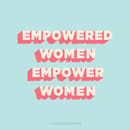Source: www.salvationarmyusa.org
Perhaps the most important question on everyone’s minds lately is white and gold or black and blue? #TheDress has been at the center of conversation for the past week, with people divided on the actual color of the dress. While 68% of people say that the dress is clearly white and gold, a significant portion of the population, 32%, believes the dress to be black and blue (see this BuzzFeed article for the statistics). The debate took social media by storm, with thousands of people sharing pictures of the dress, confused as to why some people saw it differently. However, while #TheDress was trending on Twitter, the Salvation Army jumped on the bandwagon in a different way.
The South African division of the Salvation Army tweeted an image of a woman wearing the dress (clearly in white and gold), covered in bruises with the caption, “Why is it so hard to see black and blue? The only illusion is if you think it was her choice. One in 6 women are victims of abuse. Stop abuse against women.” The caption refers to the fact that domestic abuse is an issue that is too frequently overlooked in today’s society. Many people (including domestic abuse victims) believe that by ignoring the issue, it doesn’t exist, and don’t receive the assistance and care they need to make a full recovery and leave an abusive relationship.
Victim-shaming is also a huge issue addressed in the ad. Women tend to be more critical toward one another, and are also more likely than men to blame the abuse on the victim. By emphasizing that the only illusion is the fact that people may believe the abuse is the victim’s choice and that he or she is in control, the ad alludes to the fact that so many people fail to understand and address the issue of domestic abuse, and shame the victim into hiding his or her bruises.
The tweet was retweeted 11,000 times and favorited 5,000 times in the first 15 hours after it was posted, with many people claiming that it was a successful campaign and use of #TheDress’ previous social media success. However, the campaign also received a number of critical comments, with one Twitter user in particular, an occupational therapist, asserting, “the image presents the woman as a blank page for us to project our discomfort with domestic violence onto, without interrogating the issue” (read the full tweet here). The fact that the model appears to be in a provocative pose sexualizes abuse (and perhaps rape). Despite the clever timing and message, the campaign solely encourages viewers to “see the black and blue” instead of providing any information about organizations and resources that can help victims of domestic abuse.
What do you think about the campaign? Do you think it’s a clever and creative way to capitalize on #TheDress’ social media success, or does it fall short in providing awareness and assistance to domestic abuse victims?
For domestic abuse resources visit:
The National Domestic Violence Hotline
National Resource Center on Domestic Violence
National Coalition Against Domestic Violence
National Health Resource Center on Domestic Violence
Additionally, you may seek advice and assistance from the FSU Counseling Center at (850) 644-2003 or during regular business hours, Monday-Friday 8am-5pm.

